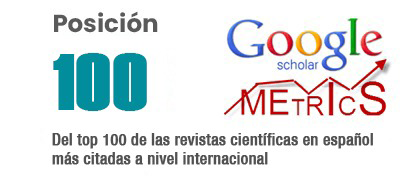Neuroscience and education: understanding the origin of learning from brain plasticity
DOI:
https://doi.org/10.62452/tasqde94Keywords:
Neuroscience, learning, brain plasticity, cognitive processes, neural connections, brain areas, innovative educationAbstract
Neuroscience, as a vast field of study, is responsible for offering revolutionary perspectives on how the human brain learns and processes information. So this article delves into the contribution of this discipline in order to understand learning, thus proposing an innovative education that is based on the research of Jean Piaget, Paul McLean, Francisco Mora, among other prominent figures with an exploratory and descriptive methodology. Examining brain plasticity, that amazing ability of the brain to adapt and reorganize in response to new experiences and challenges that humans face throughout life. Taking into account the neural connections, which are strengthened or weakened with each new experience and are also fundamental to learning and the acquisition of knowledge. So in the development of the same, the importance of understanding the cognitive processes and brain areas that work in synergy to generate the conscious experience, and contribute to the functioning of the brain, resulting in learning, is highlighted. Understanding these mechanisms can therefore not only transform the way we teach in classrooms, but can also influence self-taught learning methods and settings outside of traditional educational settings. Neuroscience, therefore, not only illuminates areas of knowledge, but also offers tools to improve educational practices, making learning a more personalized and effective experience.
Downloads
References
Álvarez, M. (2023). Las teorías del aprendizaje en la neuroeducación: ¿Cómo aprende el cerebro humano? Blog de Instituto Serca. https://blog.institutoserca.com/las-teorias-del-aprendizaje-en-la-neuroeducacion-como-aprende-el-cerebro-humano/
Banco Bilbao Vizcaya Argentaria S.A. (2018). ¿Qué es la neuroeducación? Francisco Mora, doctor en Neurociencia y Medicina. YouTube. https://www.youtube.com/watch?v=d2Fud46xFPQ
Barrecheguren, P. (2022). Santiago Ramón y Cajal, el explorador de neuronas. Muy Interesante. https://www.muyinteresante.com/ciencia/26262.html
Bueno, D. (2020). Genética y aprendizaje: Cómo influyen los genes en el logro educativo. Journal of Neuroeducation, 1(1), 38-51. https://revistes.ub.edu/index.php/joned/article/view/31788
Castillero Mimenza, O. (2018). Sinapsis: qué son, tipos y funciones. Psicología y Mente. https://psicologiaymente.com/neurociencias/sinapsis
Kazilek. (2017). Anatomía de la neurona. Ask A Biologist. https://askabiologist.asu.edu/anatomia-de-la-neurona
Puig, R. P. (2020). Sistema nervioso periférico: funciones, partes y enfermedades. Lifeder. https://www.lifeder.com/sistema-nervioso-periferico/
Ricardo, R. (2024 . Teoría del Desarrollo Cognitivo de Piaget: Definición y etapas. Estudiando. https://estudyando.com/teoria-del-desarrollo-cognitivo-de-piaget-definicion-y-etapas/
Rodríguez Camón, E. (2017, 18 abril). Andragogía: el aprendizaje en edades avanzadas. Psicología y mente. https://psicologiaymente.com/desarrollo/andragogia
Rubio, E. (2019). El cerebro triuno. https://enriquerubio.net/el-cerebro-triuno
Sáez, M. C. (2024). ¿Qué aporta la neurociencia a la educación? Tres Punto E-learning. https://www.trespuntoelearning.com/neurociencia-educacion/
Stepko, B. (2020, 24 noviembre). Conceptos básicos acerca de la vista y los ojos: cómo vemos. AARP. https://www.aarp.org/espanol/salud/enfermedades-y-tratamientos/info-2020/anatomia-del-ojo-humano.html
Triglia, A. (2024). Sistema límbico: la parte emocional del cerebro. Psicología y Mente. https://psicologiaymente.com/neurociencias/sistema-limbico-cerebro#%C2%BFQu%C3%A9%20Es%20El%20Sistema%20L%C3%ADmbico
Tydes, C. (2019). Piaget’s Theory of Cognitive Development. Pinterest. https://www.pinterest.co.kr/pin/704743041672737411/
Downloads
Published
Issue
Section
License
Copyright (c) 2025 Jesús Alfonso Quintero-Fajardo, Cecilia Esmeralda Domínguez-Ayala (Autor/a)

This work is licensed under a Creative Commons Attribution-NonCommercial-ShareAlike 4.0 International License.
Authors who publish in Revista Metropolitana de Ciencias Aplicadas (REMCA), agree to the following terms:
1. Copyright
Authors retain unrestricted copyright to their work. Authors grant the journal the right of first publication. To this end, they assign the journal non-exclusive exploitation rights (reproduction, distribution, public communication, and transformation). Authors may enter into additional agreements for the non-exclusive distribution of the version of the work published in the journal, provided that acknowledgment of its initial publication in this journal is given.
© The authors.
2. License
The articles are published in the journal under the Creative Commons Attribution-NonCommercial-ShareAlike 4.0 International License (CC BY-NC-SA 4.0). The terms can be found at: https://creativecommons.org/licenses/by-nc-sa/4.0/deed.en
This license allows:
- Sharing: Copying and redistributing the material in any medium or format.
- Adapting: Remixing, transforming, and building upon the material.
Under the following terms:
- Attribution: You must give appropriate credit, provide a link to the license, and indicate if any changes were made. You may do this in any reasonable manner, but not in any way that suggests the licensor endorses or sponsors your use.
- NonCommercial: You may not use the material for commercial purposes.
- ShareAlike: If you remix, transform, or build upon the material, you must distribute your creation under the same license as the original work.
There are no additional restrictions. You may not apply legal terms or technological measures that legally restrict others from doing anything the license permits.




